Streamline Client Onboarding with Agency Simplifier
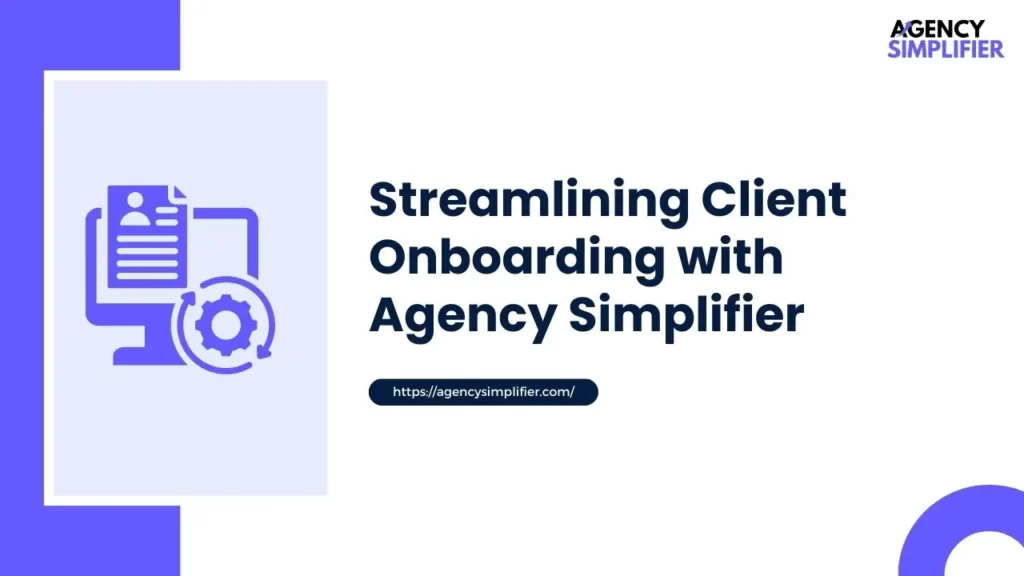
Client onboarding is the first step to building strong, lasting relationships between an agency and its clients. However, the onboarding process can be time-consuming and complex, often involving extensive communication, service-level agreements, questionnaires, and setup. Agencies need a streamlined approach that ensures customer success while enhancing the overall client experience. Simplifying this critical stage is key to improving productivity and strengthening agency-client relationships.
This is where Agency Simplifier transforms onboarding into a smooth, efficient experience. By automating key steps, centralizing client information, and enabling seamless communication, Agency Simplifier offers a smart solution to traditional onboarding challenges. In this post, we’ll explore a comprehensive approach to client onboarding, showing you how Agency Simplifier’s tools can enhance each stage of the process.
This is where Agency Simplifier transforms onboarding into a smooth, efficient experience. By automating key steps, centralizing client information, and enabling seamless communication, Agency Simplifier addresses traditional onboarding challenges. Its intuitive tools enhance employee productivity and support marketing strategies by improving customer retention. In this post, we’ll explore a comprehensive client onboarding process, showing you how Agency Simplifier’s tools can enhance each stage of the process.
1. Understanding the Importance of Client Onboarding Process
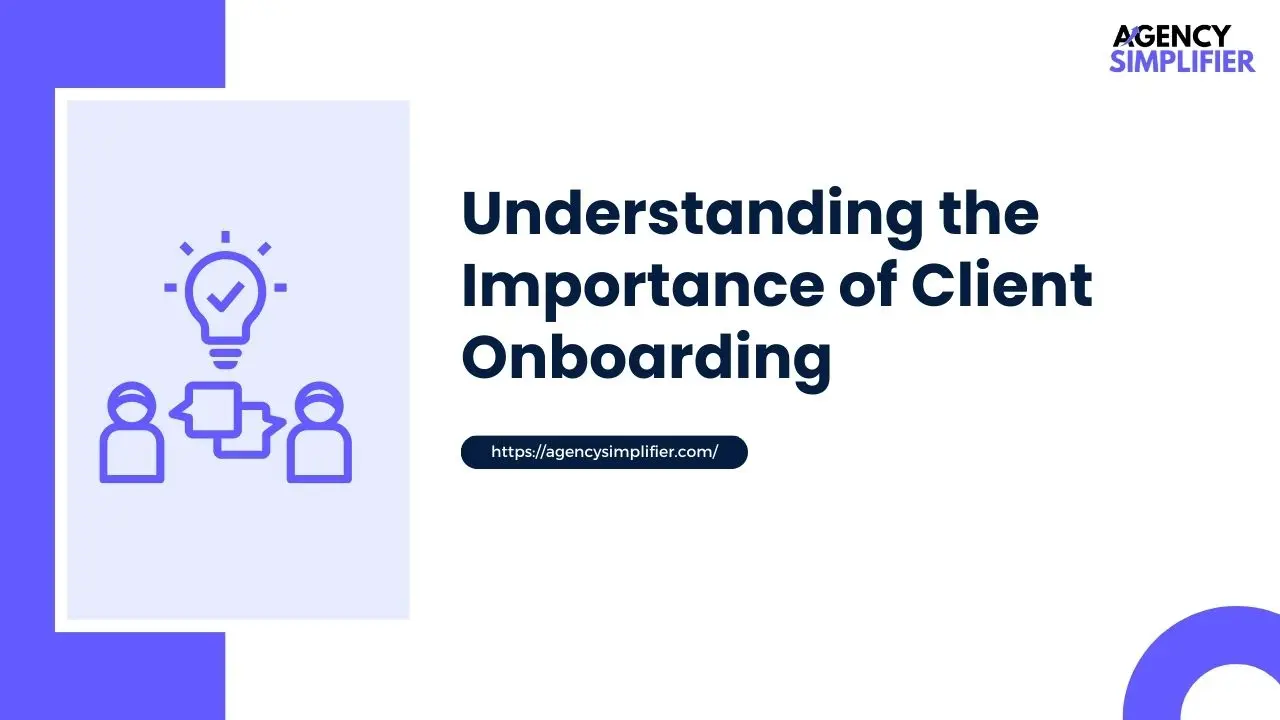
Setting the Stage for Client Relationships
Client onboarding is more than just an administrative process; it’s the foundation for a successful partnership. When clients feel informed, organized, and guided from the start, it builds trust and satisfaction. A solid onboarding process sets expectations, aligns goals, and ultimately reduces churn by making clients feel valued and understood.
Challenges of Traditional Onboarding
Manual onboarding can be tedious and prone to errors. Common challenges include:
- Inconsistent Communication: Without a structured process, information can get lost or misunderstood.
- Excessive Time Investment: Onboarding without automation can drain time and resources.
- Unclear Expectations: Clients may feel uncertain about timelines, deliverables, or required actions, leading to frustration.
By addressing these pain points, agencies can increase client satisfaction and build a foundation for long-term loyalty. Agency Simplifier tackles these challenges directly, allowing agencies to deliver a smooth and efficient client onboarding experience.
2. How Automation Can Transform Client Onboarding
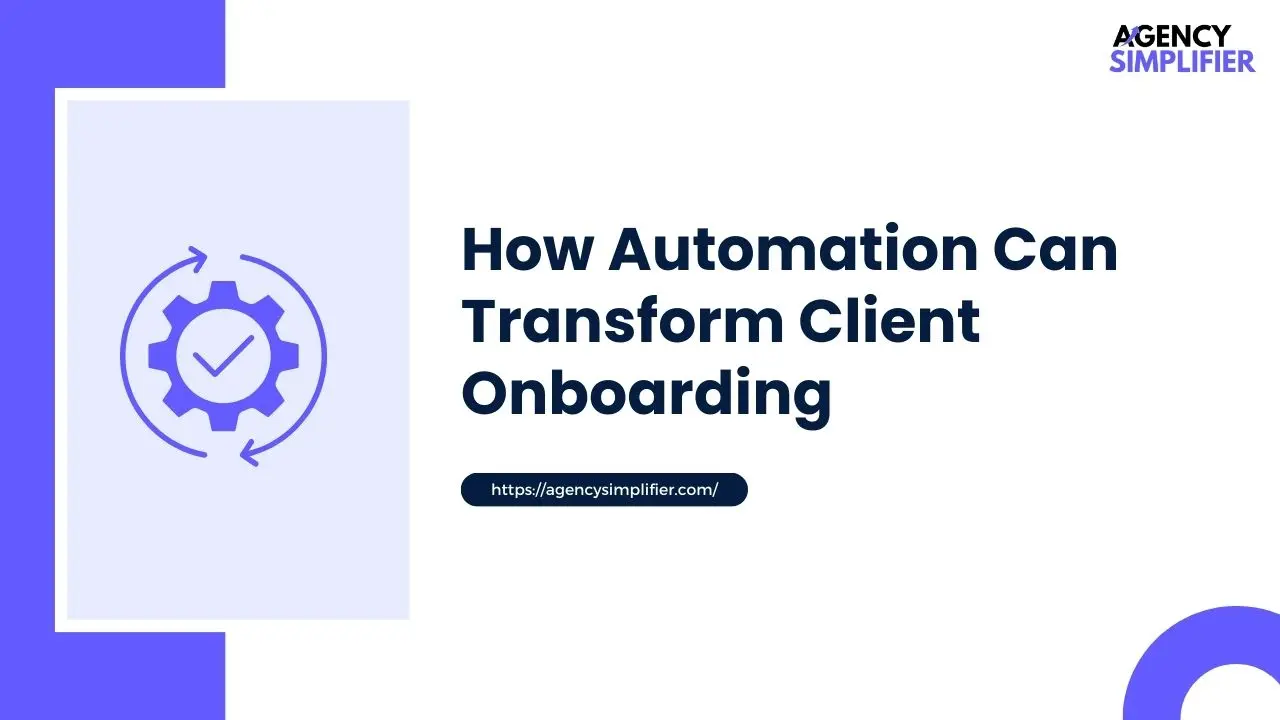
Why Automate Onboarding?
Automation in client onboarding eliminates repetitive tasks, reducing the chance of human error and ensuring that nothing is overlooked. It streamlines administrative work, freeing up your team to focus on building client relationships. By automating document collection, follow-ups, and task assignments, agencies can minimize manual effort, improve productivity, and enhance consistency.
Benefits of Using Automation for Onboarding
Automation delivers several advantages:
- Increased Efficiency: Tasks that would otherwise take hours can be handled instantly, improving employee productivity.
- Consistency: Clients receive the same high-quality experience every time, enhancing their customer experience.
- Better Communication: Automated updates keep clients informed without overwhelming them with emails or calls.
Agency Simplifier leverages automation to streamline each step of client onboarding, ensuring every task is completed on time and with minimal manual intervention. By setting up automated emails, follow-up reminders, and document requests, the platform helps agencies avoid delays and miscommunication.
3. Key Features of Agency Simplifier for Onboarding
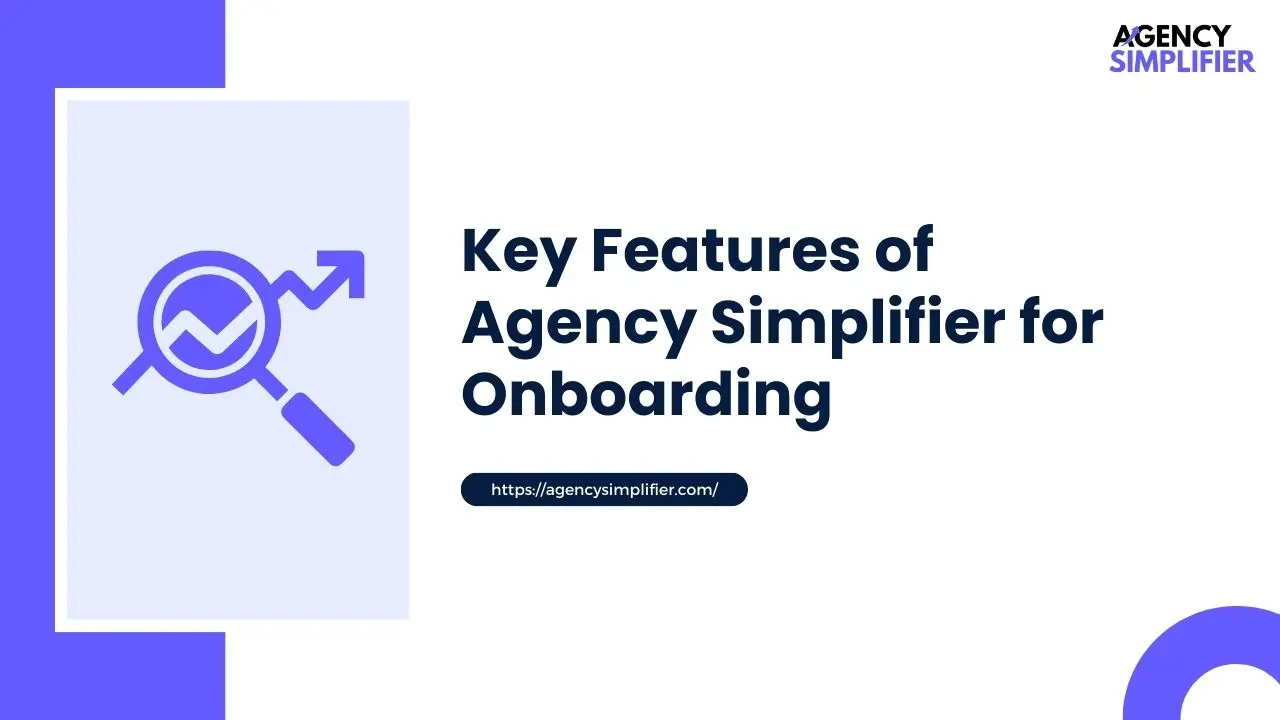
Agency Simplifier offers a variety of tools designed specifically to optimize client onboarding:
- Automated Document Collection: Quickly gather client information with customizable forms, reducing back-and-forth emails and improving the customer experience in onboarding.
- Task Assignments and Progress Tracking: Easily manage tasks with deadlines and progress indicators, boosting productivity in client onboarding and ensuring a smooth client onboarding process.
- Integrated Communication Platform: Streamline client communication in one place, enhancing agency client management and boosting client loyalty and onboarding.
- Timeline and Goal Setting: Setting a clear timeline helps manage client expectations. With Agency Simplifier, you can create a visual timeline with key goals, deadlines, and deliverables, ensuring everyone knows what to expect.
By combining these features, Agency Simplifier transforms onboarding into a smooth, streamlined process, eliminating bottlenecks and improving client satisfaction.
4. Step-by-Step Guide to Using Agency Simplifier for Onboarding
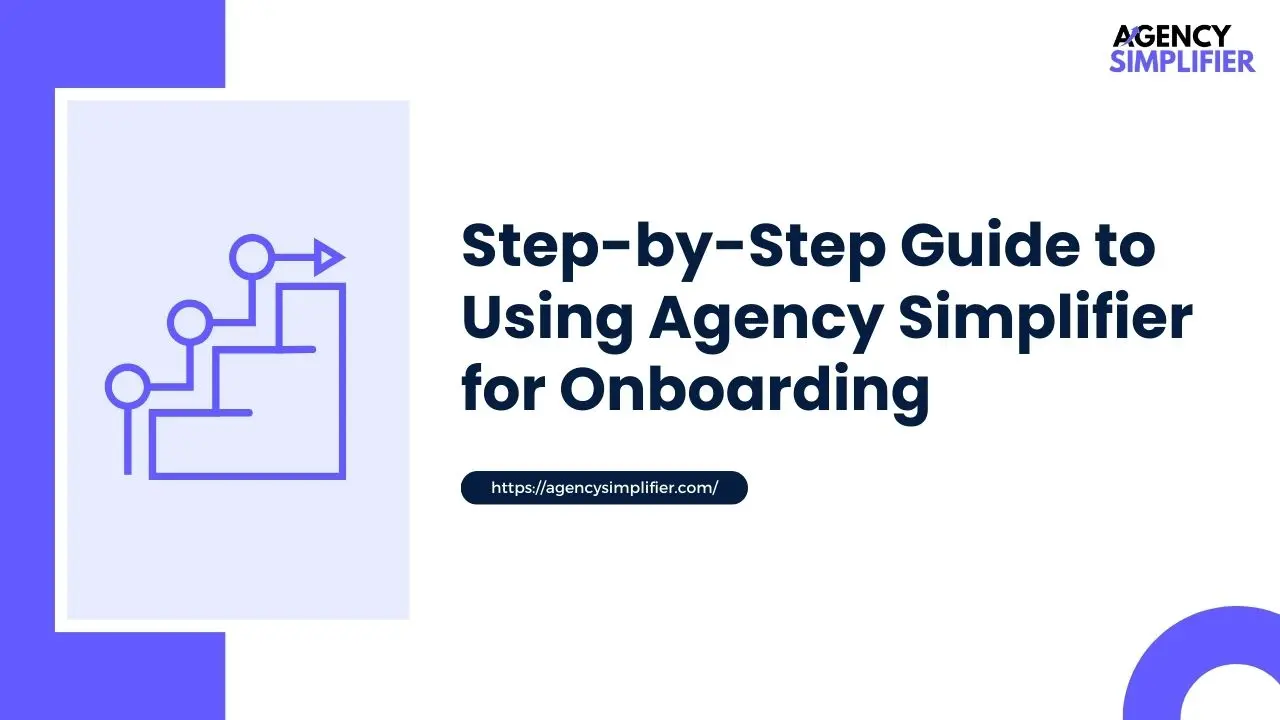
Let’s explore how to use Agency Simplifier at each stage of the client onboarding journey:
Step 1: Welcome the Client
Upon signing up, Agency Simplifier sends an automated welcome email that offers a friendly introduction, outlines what to expect, and provides key contact details, ensuring a smooth start to the client onboarding process.
Step 2: Collect Essential Information
Agency Simplifier simplifies document collection with customizable forms. Whether it’s client objectives, contact information, or initial project details, these forms collect all relevant information and store it in a central location for easy access.
Step 3: Assign a Dedicated Point of Contact
Assigning a point of contact creates a sense of consistency and reliability. Agency Simplifier’s client profile system makes it easy to assign and identify the primary contact for each client, ensuring smooth communication and accountability.
Step 4: Develop a Timeline and Set Goals
Setting a timeline with deliverables and key milestones helps clients feel informed and involved. Using Agency Simplifier, you can outline project steps and provide a visual guide for clients, ensuring they know what to expect.
Step 5: Automate Follow-Up Communication
Agency Simplifier’s automated reminder system keeps clients updated on important tasks, such as document submissions or meeting schedules. By automating follow-ups, the platform ensures clients remain engaged and on track without overwhelming them with messages.
Step 6: Monitor Onboarding Progress
With a clear dashboard, Agency Simplifier allows both you and the client to track onboarding progress. This transparency builds trust and provides a reference point for reviewing completed tasks and upcoming steps.
Following these steps with Agency Simplifier ensures every aspect of onboarding is handled efficiently, giving clients a smooth experience and setting the stage for a positive working relationship.
5. How to Customize Agency Simplifier for Your Agency’s Unique Needs
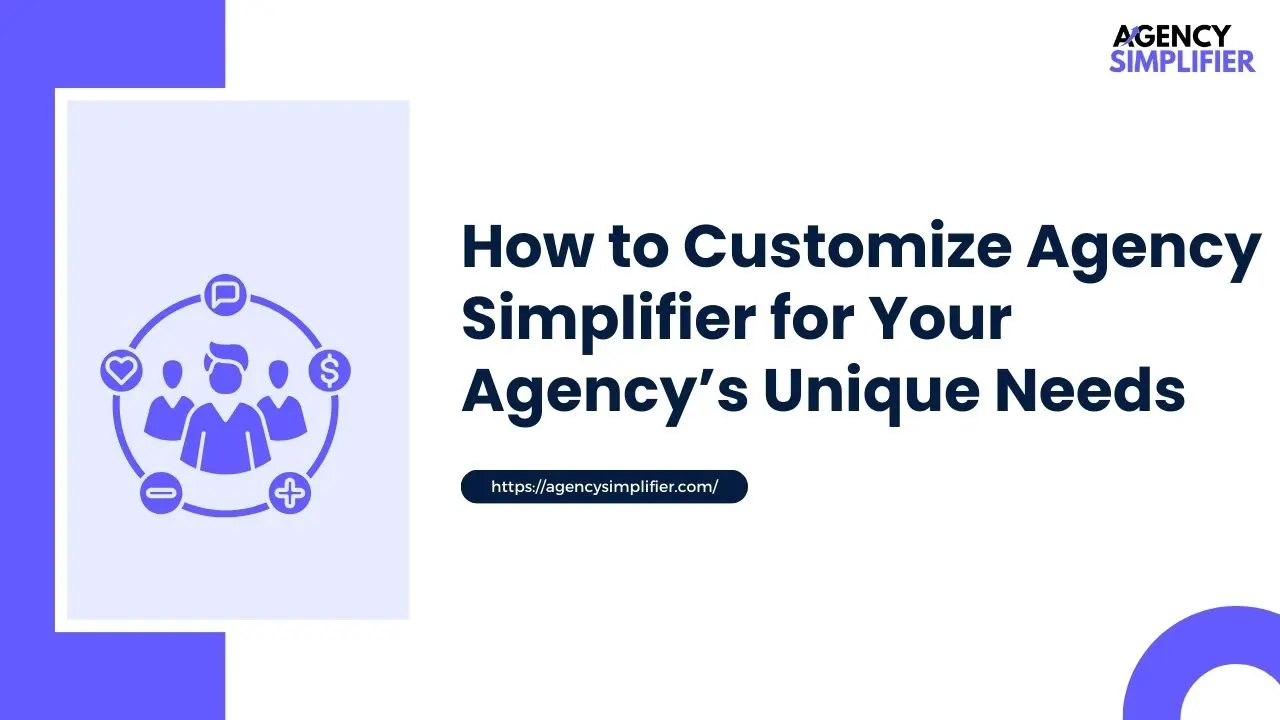
Personalizing the Onboarding Process
While many steps in onboarding are universal, customization is key for reflecting your agency’s unique approach. Agency Simplifier’s tools are flexible, allowing you to tailor forms, timelines, and communications to suit your brand and clients’ needs.
Using Custom Templates for Different Client Types
With Agency Simplifier, you can create templates for different types of clients. For instance:
- Marketing Clients: Customize forms to gather details on their target audience, key messaging, and previous campaigns, ensuring effective marketing strategies for onboarding.
- Tech Clients: Focus on technical setup requirements, platform access, and initial testing, making use of productivity tools for client onboarding.
- Local Businesses: Emphasize local SEO goals, geographic targeting, and competitive analysis.
Each client type may have unique requirements, and by creating tailored templates, your agency can onboard each client with minimal changes, ensuring a faster and more relevant experience.
Adapting Communication Styles
Agency Simplifier’s communication tools allow for varied communication styles. You might set up more frequent updates for clients who prefer regular interaction while offering minimal check-ins for clients who value independence.
6. The Role of Communication in Effective Onboarding
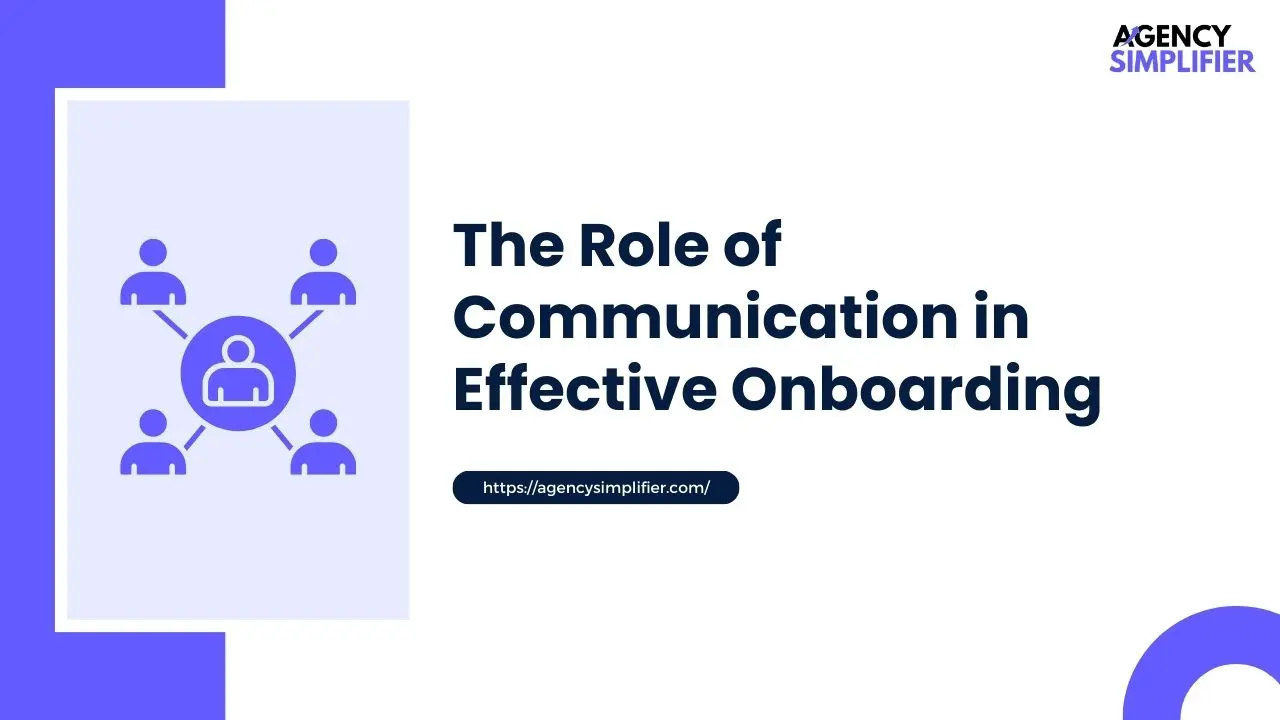
Keeping Communication Clear and Consistent
Effective communication is essential for successful onboarding. With Agency Simplifier, you can set up a dedicated communication channel for each client, making it easy to keep track of conversations and updates.
Setting Expectations Early
From the first contact, setting expectations is crucial. Clients should understand the onboarding process, know who they’ll be in touch with, and be clear about timelines. Agency Simplifier helps with this by allowing you to create and share a simple outline of the onboarding process, answering key questions upfront.
Using Feedback to Improve the Process
Client feedback is invaluable for refining the onboarding experience. Agency Simplifier includes options for feedback forms and surveys, which let clients share their thoughts and suggest improvements. Regular feedback helps you optimize your process, ensuring future clients enjoy an even better experience.
7. Measuring Onboarding Success with Agency Simplifier
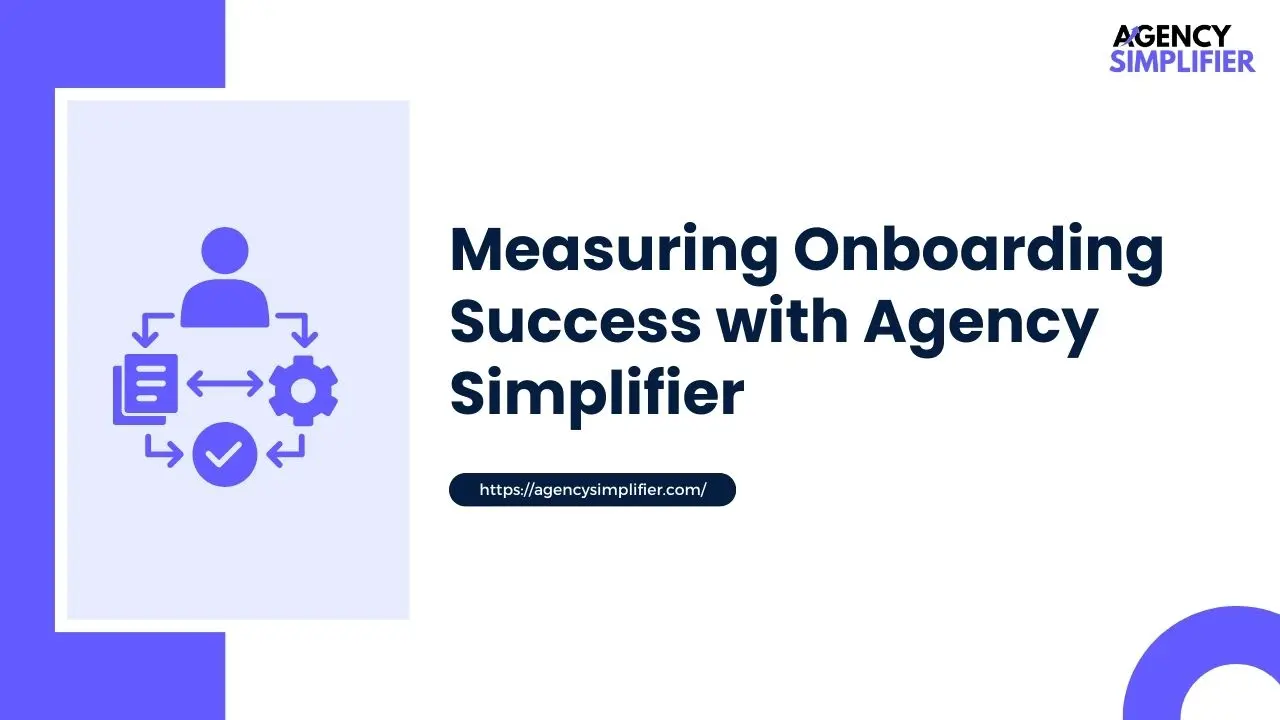
Tracking Key Metrics
To continually improve, agencies need to measure onboarding effectiveness. Key metrics to monitor include:
- Time to Onboard: How long it takes from sign-up to project initiation.
- Client Satisfaction: Feedback scores from clients at each stage.
- Task Completion Rate: The percentage of tasks completed on time by both the agency and the client.
Agency Simplifier provides insights into these metrics, allowing you to see where onboarding succeeds and where improvements are needed.
Using Data to Enhance the Client Experience
Data-driven insights enable agencies to make targeted improvements. For instance, if clients often take longer to submit initial information, you might simplify the form or send a personalized reminder. Agency Simplifier’s data dashboard provides a detailed look at onboarding performance, so you can identify bottlenecks and optimize the experience over time.
8. Case Studies: Real-World Success with Agency Simplifier
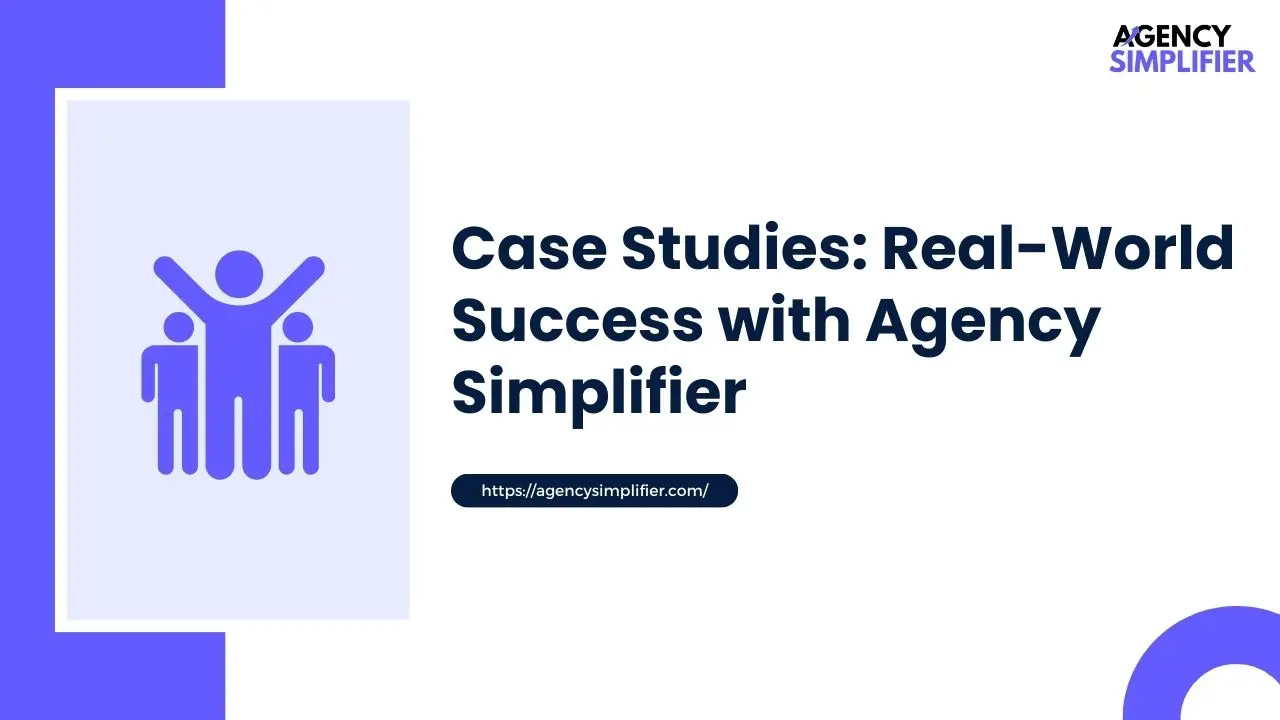
Case Study 1: A Marketing Agency’s Transformation
A mid-sized marketing agency struggled with onboarding due to time-consuming document collection and inconsistent follow-ups. After implementing Agency Simplifier, they automated the entire process, reducing onboarding time by 40% and improving client satisfaction scores.
Case Study 2: A Web Development Agency’s Improved Efficiency
A web development agency faced challenges with tracking tasks during onboarding. Agency Simplifier’s task management feature allowed them to set clear deadlines, track completion, and send automated reminders. The result was faster project starts and happier clients.
These examples show how agencies across industries benefit from Agency Simplifier’s efficient and structured onboarding tools.
Conclusion: A Better Way to Onboard Clients
A well-organized client onboarding process is essential for any agency aiming to build lasting client relationships and foster customer success. Agency Simplifier streamlines and optimizes this process, automating repetitive tasks, enhancing customer experience, and improving productivity. This allows agencies to focus on what matters most—creating value for clients and strengthening client relationship management.
By using Agency Simplifier, agencies can streamline the client onboarding process, boost customer experience, and enhance productivity. The platform simplifies key tasks like client onboarding questionnaires and onboarding software, ensuring a smooth onboarding journey that drives customer success and strengthens client relationship management. This efficient process builds trust and reduces churn, supporting a strong loyalty business model.
Make Client Onboarding Seamless and Efficient.
Frequently Asked Questions (FAQs)
Q1: What is client onboarding?
Ans: Client onboarding is the process of welcoming new clients and setting them up with everything they need, including gathering information, creating a timeline, and defining goals for successful customer relationship management.
Q2: Why is client onboarding important?
Ans: Client onboarding is crucial as it builds trust, sets clear expectations, and ensures a smooth transition into the agency’s services. A strong onboarding strategy drives customer success, keeps clients satisfied, and fosters long-term client loyalty.
Q3: How does automation help in onboarding?
Ans: Automation streamlines onboarding by simplifying document collection, task assignments, and follow-ups, improving efficiency and ensuring alignment with service-level agreements.
Q4: What tools can help with client onboarding?
Ans: Popular tools include Calendly for scheduling, Content Snare for document collection, and PandaDoc for signing documents.
Q5: What is a Mutual Action Plan (MAP)?
Ans: A Mutual Action Plan (MAP) is a list of goals and tasks that both the agency and the client agree to work on together. This tool aligns expectations, fosters client relationship management, and ensures both parties are on track to achieve success.
Q6: How can I improve communication during onboarding?
Ans: Use a single communication platform, set clear expectations, and regularly check in with clients to ensure they feel supported. Effective communication helps manage client onboarding and improves the overall customer experience.
Q7: How do I measure the success of onboarding?
Ans: Track metrics like time to complete onboarding, client feedback, and whether clients meet important milestones. These performance indicators provide insight into how well your onboarding process contributes to client success and retention.
Q8: How can I keep clients engaged after onboarding?
Ans: Regular check-ins, updates, and support keep clients engaged, build client loyalty, and enhance employee retention through strong relationships.
Shripad Deshmukh
Shripad Deshmukh, founder of Agency Simplifier, brings over 15 years of experience in custom SaaS development and product management. With a strong focus on digital transformation and multi-platform customer experiences.